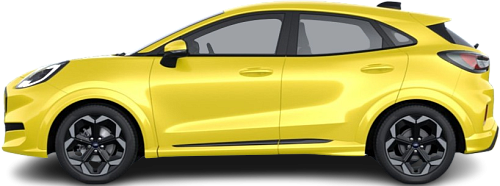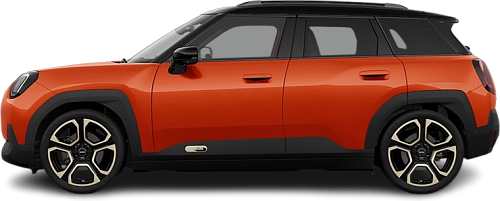USA EV Comparison: Ford Puma Gen-E FWD vs Mini Aceman E
Struggling to Decide? Let AI Help!
Your AI Summary Is Ready!
General Info
While both vehicles are currently in production, they are not sold in the United States.
The two vehicles share the same body style: SUV.
| Property | Ford Puma Gen-E FWD | Mini Aceman E |
|---|---|---|
| Years of Production | 2024-… | 2024-… |
| Current Status | Produced | Produced |
| Country of Manufacture | Romania | China |
| Body Style | SUV | SUV |
| Market Availability | EU | EU |
| GCC Score | 6 | 5.7 |
Range and Efficiency
The Ford Puma Gen-E FWD (2024-…) boasts a greater real-world range, a larger battery, and superior energy efficiency compared to the Mini Aceman E (2024-…).
| Property | Ford Puma Gen-E FWD | Mini Aceman E |
|---|---|---|
| Range (WLTP) | 234 mi | 193 mi |
| Range (GCC) | 201 mi | 165 mi |
| Battery Capacity (Nominal) | 46 kWh | 42.5 kWh |
| Battery Capacity (Usable) | 43 kWh | 38.5 kWh |
| Efficiency per 100 mi | 21.4 kWh/100 mi | 23.3 kWh/100 mi |
| Efficiency per kWh | 4.67 mi/kWh | 4.29 mi/kWh |
| Range and Efficiency Score | 7.3 | 6.4 |
Charging
Both vehicles utilize a standard 400-volt architecture.
The Ford Puma Gen-E FWD (2024-…) offers faster charging speeds at DC stations, reaching up to 100 kW, while the Mini Aceman E (2024-…) maxes out at 70 kW.
Both vehicles are equipped with the same on-board charger, supporting a maximum AC charging power of 11 kW.
| Property | Ford Puma Gen-E FWD | Mini Aceman E |
|---|---|---|
| Max Charging Power (AC) | 11 kW | 11 kW |
| Max Charging Power (DC) | 100 kW | 70 kW |
| Architecture | 400 V | 400 V |
| Charge Port | CCS Type 2 | CCS Type 2 |
| Charging Score | 5.3 | 5.2 |
Performance
Both vehicles are front-wheel drive.
The Mini Aceman E (2024-…) boasts greater motor power and accelerates faster from 0 to 60 mph.
| Property | Ford Puma Gen-E FWD | Mini Aceman E |
|---|---|---|
| Drive Type | FWD | FWD |
| Motor Type | PMSM | PMSM |
| Motor Power (kW) | 124 kW | 135 kW |
| Motor Power (hp) | 166 hp | 181 hp |
| Motor Torque | 214 lb-ft | 214 lb-ft |
| 0-60 mph | 7.7 s | 7.6 s |
| Top Speed | 99 mph | 99 mph |
| Performance Score | 3.3 | 3.4 |
Dimensions
The Ford Puma Gen-E FWD (2024-…) is longer, wider, and taller.
Both models have similar wheelbase lengths.
| Property | Ford Puma Gen-E FWD | Mini Aceman E |
|---|---|---|
| Length | 165.9 in | 160.6 in |
| Width (with Mirrors) | 76 in | 78.4 in |
| Width (w/o Mirrors) | 71.1 in | 69.1 in |
| Height | 61.2 in | 59.6 in |
| Wheelbase | 101.9 in | 102.6 in |
Cargo and Towing
The Ford Puma Gen-E FWD (2024-…) provides more cargo capacity, featuring both a larger trunk and more space with the rear seats folded.
A frunk (front trunk) is available in the Ford Puma Gen-E FWD (2024-…), but the Mini Aceman E (2024-…) doesn’t have one.
When it comes to towing, both cars offer identical towing capacity (up to 1653 lb).
| Property | Ford Puma Gen-E FWD | Mini Aceman E |
|---|---|---|
| Number of Seats | 5 | 5 |
| Curb Weight | 3446 lb | 3792 lb |
| Cargo Volume (Trunk) | 18.5 ft3 | 10.6 ft3 |
| Cargo Volume (Max) | 45.3 ft3 | 35.5 ft3 |
| Cargo Volume (Frunk) | 1.5 ft3 | - Cargo Volume (Frunk) |
| Towing Capacity | 1653 lb | 1653 lb |
| Cargo and Towing Score | 5.9 | 5.3 |




